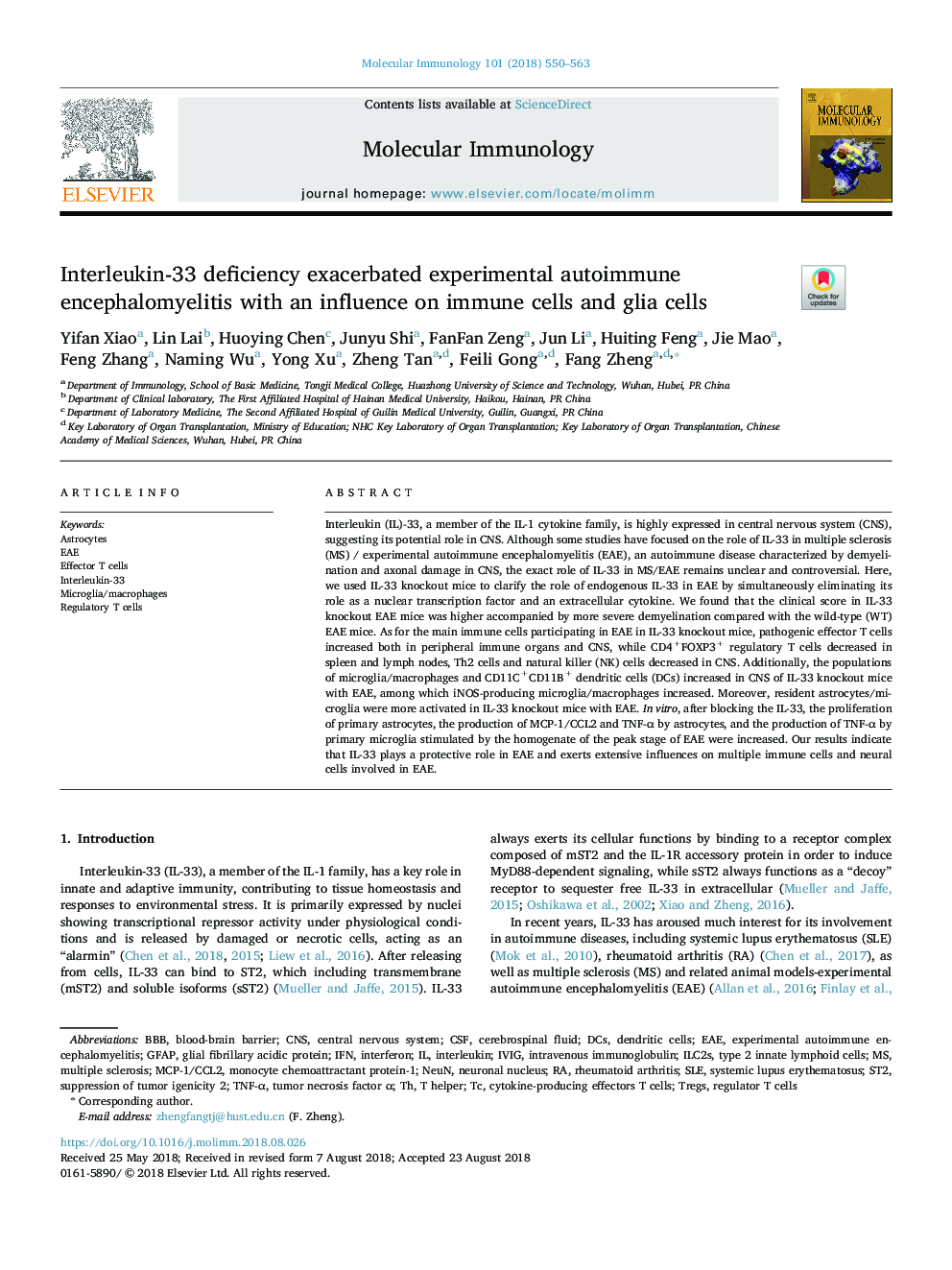| Article ID | Journal | Published Year | Pages | File Type |
|---|---|---|---|---|
| 9955385 | Molecular Immunology | 2018 | 14 Pages |
Abstract
Interleukin (IL)-33, a member of the IL-1 cytokine family, is highly expressed in central nervous system (CNS), suggesting its potential role in CNS. Although some studies have focused on the role of IL-33 in multiple sclerosis (MS) / experimental autoimmune encephalomyelitis (EAE), an autoimmune disease characterized by demyelination and axonal damage in CNS, the exact role of IL-33 in MS/EAE remains unclear and controversial. Here, we used IL-33 knockout mice to clarify the role of endogenous IL-33 in EAE by simultaneously eliminating its role as a nuclear transcription factor and an extracellular cytokine. We found that the clinical score in IL-33 knockout EAE mice was higher accompanied by more severe demyelination compared with the wild-type (WT) EAE mice. As for the main immune cells participating in EAE in IL-33 knockout mice, pathogenic effector T cells increased both in peripheral immune organs and CNS, while CD4+FOXP3+ regulatory T cells decreased in spleen and lymph nodes, Th2 cells and natural killer (NK) cells decreased in CNS. Additionally, the populations of microglia/macrophages and CD11C+CD11B+ dendritic cells (DCs) increased in CNS of IL-33 knockout mice with EAE, among which iNOS-producing microglia/macrophages increased. Moreover, resident astrocytes/microglia were more activated in IL-33 knockout mice with EAE. In vitro, after blocking the IL-33, the proliferation of primary astrocytes, the production of MCP-1/CCL2 and TNF-α by astrocytes, and the production of TNF-α by primary microglia stimulated by the homogenate of the peak stage of EAE were increased. Our results indicate that IL-33 plays a protective role in EAE and exerts extensive influences on multiple immune cells and neural cells involved in EAE.
Keywords
ILC2sIVIgST2DCsNeuNEAETregsT helperGFAPMCP-1/CCl2Rheumatoid arthritisAstrocytesexperimental autoimmune encephalomyelitisinterferonIFNinterleukinInterleukin-33Intravenous immunoglobulintumor necrosis factor αCNSBBBDendritic cellstype 2 innate lymphoid cellsEffector T cellsRegulatory T cellscentral nervous systemTNF-αSystemic lupus erythematosusSLEBlood-brain barrierCSFCerebrospinal fluidMultiple sclerosisMicroglia/macrophagesNeuronal nucleusGlial fibrillary acidic proteinmonocyte chemoattractant protein-1
Related Topics
Life Sciences
Biochemistry, Genetics and Molecular Biology
Molecular Biology
Authors
Yifan Xiao, Lin Lai, Huoying Chen, Junyu Shi, FanFan Zeng, Jun Li, Huiting Feng, Jie Mao, Feng Zhang, Naming Wu, Yong Xu, Zheng Tan, Feili Gong, Fang Zheng,
